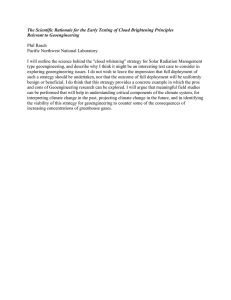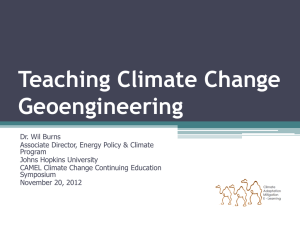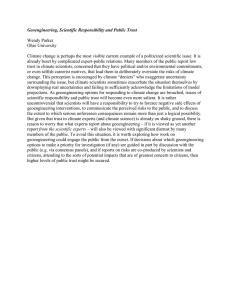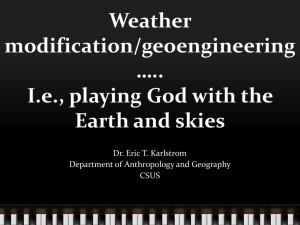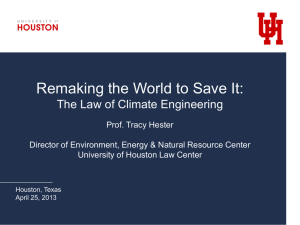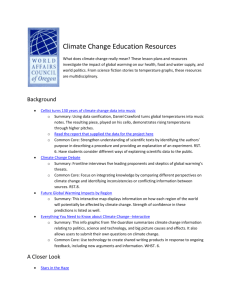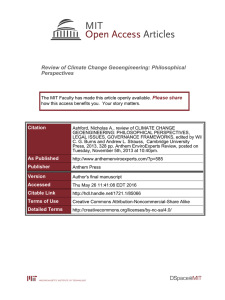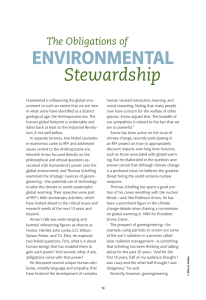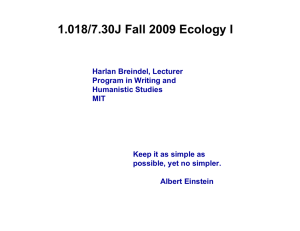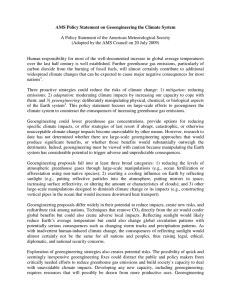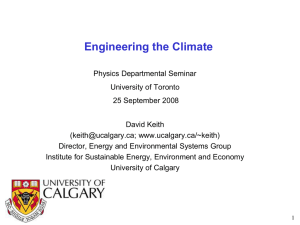Smoke and Mirrors: Is Geoengineering a Solution to Global Warming?
advertisement
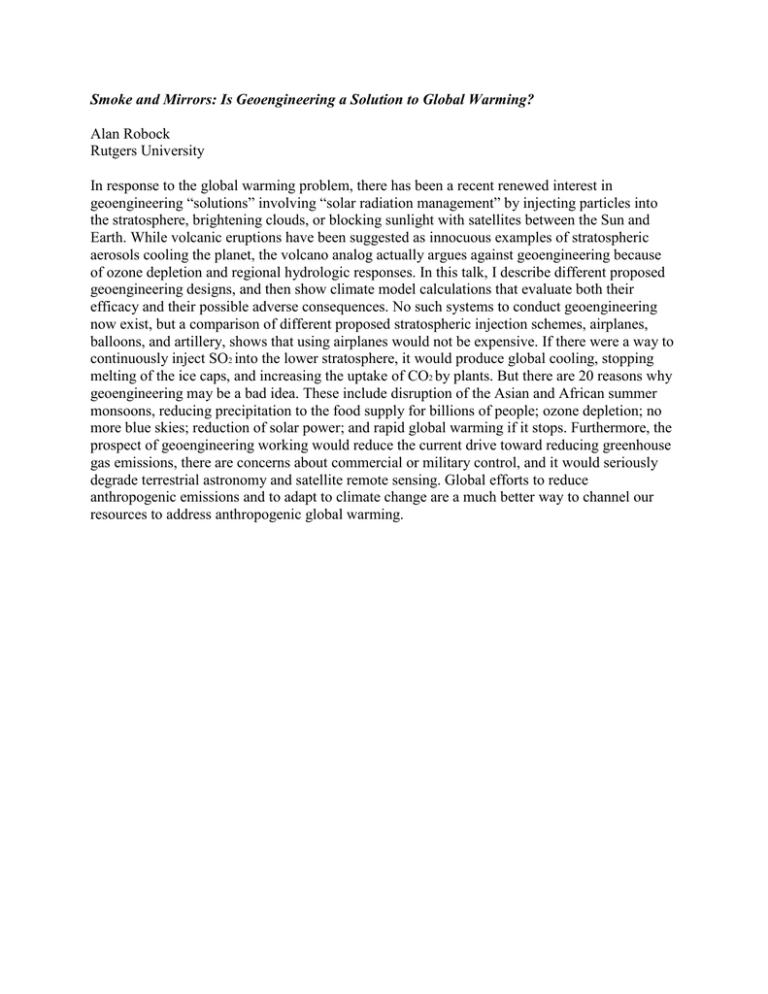
Smoke and Mirrors: Is Geoengineering a Solution to Global Warming? Alan Robock Rutgers University In response to the global warming problem, there has been a recent renewed interest in geoengineering “solutions” involving “solar radiation management” by injecting particles into the stratosphere, brightening clouds, or blocking sunlight with satellites between the Sun and Earth. While volcanic eruptions have been suggested as innocuous examples of stratospheric aerosols cooling the planet, the volcano analog actually argues against geoengineering because of ozone depletion and regional hydrologic responses. In this talk, I describe different proposed geoengineering designs, and then show climate model calculations that evaluate both their efficacy and their possible adverse consequences. No such systems to conduct geoengineering now exist, but a comparison of different proposed stratospheric injection schemes, airplanes, balloons, and artillery, shows that using airplanes would not be expensive. If there were a way to continuously inject SO2 into the lower stratosphere, it would produce global cooling, stopping melting of the ice caps, and increasing the uptake of CO2 by plants. But there are 20 reasons why geoengineering may be a bad idea. These include disruption of the Asian and African summer monsoons, reducing precipitation to the food supply for billions of people; ozone depletion; no more blue skies; reduction of solar power; and rapid global warming if it stops. Furthermore, the prospect of geoengineering working would reduce the current drive toward reducing greenhouse gas emissions, there are concerns about commercial or military control, and it would seriously degrade terrestrial astronomy and satellite remote sensing. Global efforts to reduce anthropogenic emissions and to adapt to climate change are a much better way to channel our resources to address anthropogenic global warming.
